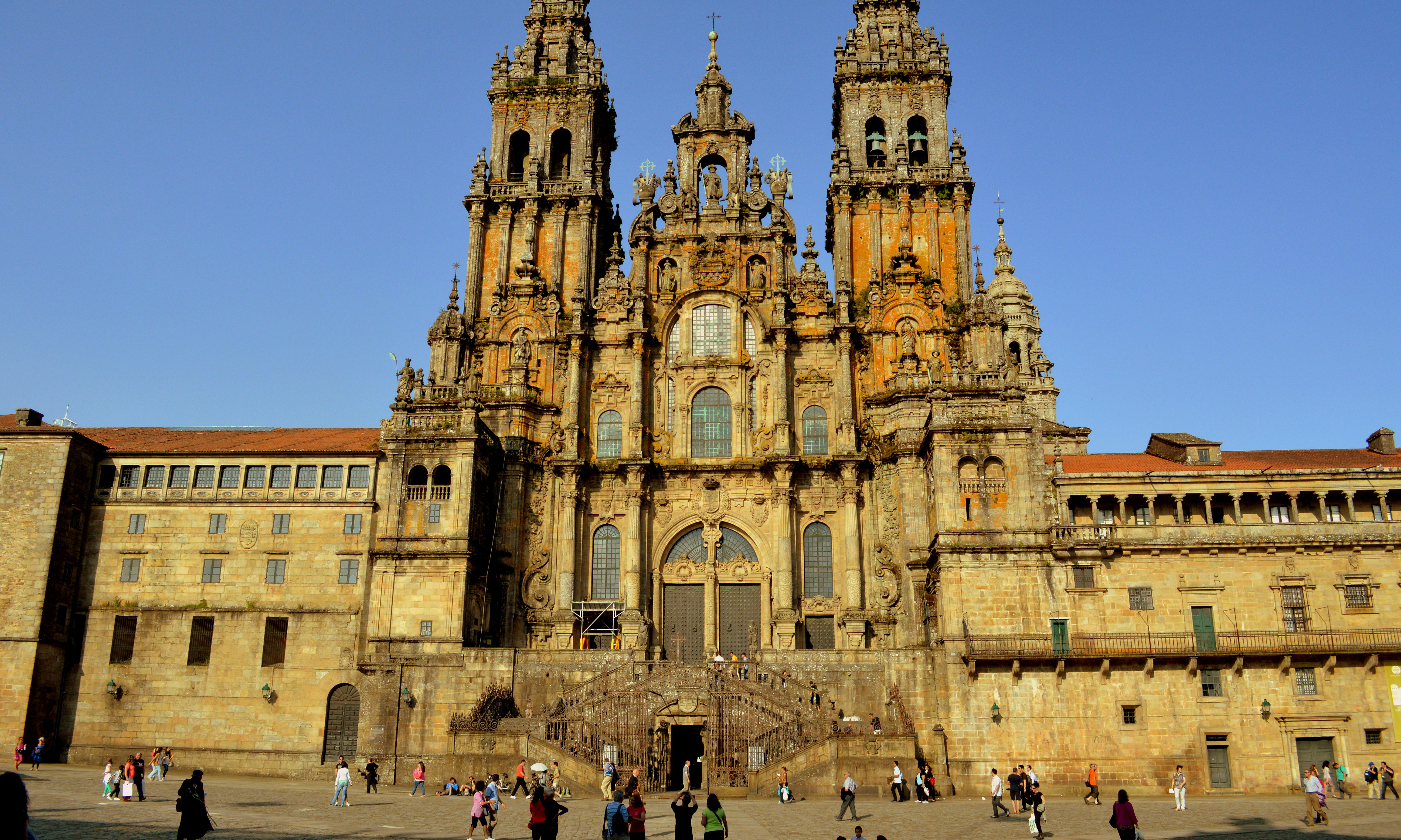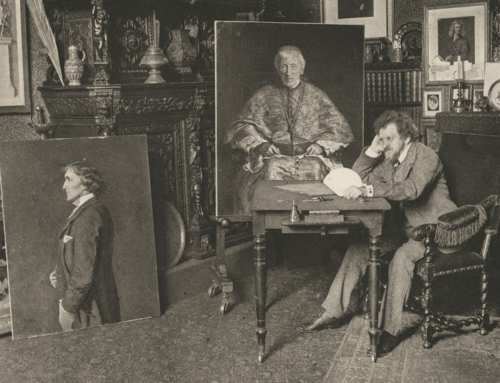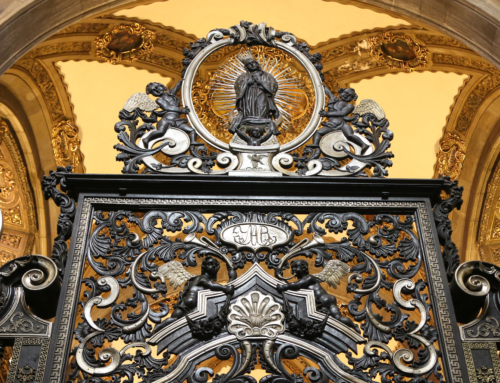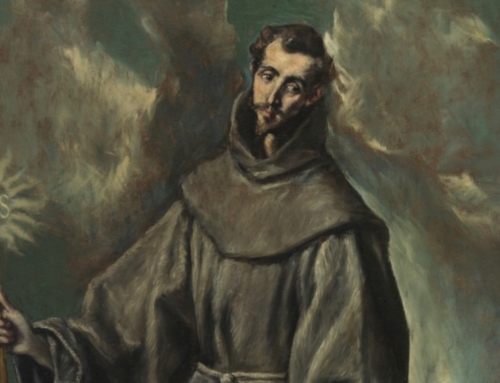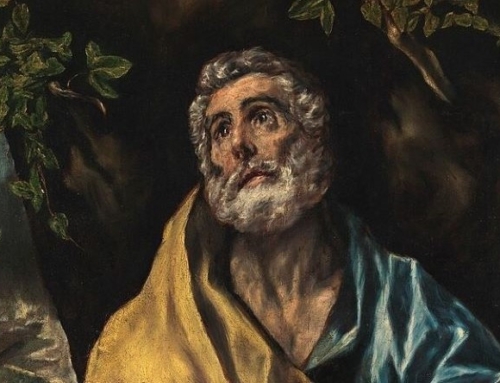“Grant us to sit, one at your right hand and one at your left, in your glory.” (Mark 10:36)
The most popular pilgrimage site in Medieval Europe was the tomb of St. James the Apostle in northwest Spain (Sant Iago is the local Galician translation for St. James). Legend has it that after this “greater” of the two Jameses was martyred in Jerusalem, his body was sent back to Spain to encourage the missionary work of the followers he left behind there. His body was buried and some nine centuries later the local bishop was guided by a star to the burial ground. Campus Stellae, he called it—the “field of stars”; and thus began the veneration of Sant Iago of Campus Stellae, known today as Santiago de Compostela.
This very James, with John his brother, makes a tall request of Our Lord on the way to Jerusalem. Jesus has just foretold his death for a third time when the Sons of Zebedee come up to ask: let us be the ones to be flanking you, front and center, when you reign gloriously in your kingdom (Mark 10: 36, freely translated). The Lord questions them: do you really know what you’re asking? They respond affirmatively that they are indeed able to drink the same chalice and be baptized with the same baptism as their Lord. He warns them of His coming death sentence, of the mockings and the scourgings, and also of the Resurrection to follow: and, like St. Therese after them, they want it all. Wherever He goes, whatever He has to endure, they want it all for themselves too.
This lesson that the Christian life is a way of suffering leading to otherworldly glory is taught well by the Camino de Santiago. Since the discovery of the relics of St. James in the Middle Ages, pilgrims have been flocking from all over Europe (and even farther) to this holy place. The road is hard, and the Spanish sun is swelteringly hot. Other than the standard shell with St. James’s cross, blisters are the most prominent trademarks of a pilgrim on the Camino (though shin splints and knee ailments are not in short supply either).
After painfully traversing this long and difficult road, the pilgrim finally reaches one of the most venerated holy sites in Europe, and his penance is fulfilled or he is able to lay his intentions at the feet of the Apostle. But very frequently, the Lord (perhaps through His Mother and His Apostle St. James) grants powerful graces to the pilgrim while still on the Way and in the midst of all the sufferings. Many have thus likened the Way to the Road to Emmaus where the Lord manifests His power en route; so the making of the pilgrimage itself can be equally as important as the destination. Everyone the pilgrim meets and every experience he has (including, and especially, the sufferings) are important and are to be remembered. But they all point to the glory which awaits us first in Santiago (with the conferring of the Compostela) and ultimately in Heaven.
Santiago, therefore, is not the final goal of the pilgrimage. The pilgrimage continues throughout the pilgrim’s entire life, and it only ends at the gates of Heaven. The pilgrim, then—whether an equipped hiker of the Camino or an ordinary Christian wherever in the world—is one who keeps at the forefront of his mind the request of the Sons of Thunder: grant that we may sit, one at your left, and one at your right, in your glory. Like St. James we all long for Heaven. But, also like St. James, we must be ready to bear patiently the sufferings and renunciations involved in the Christian life—and perhaps the mockings and scourgings—in order to get there.
There’s a wonderful pilgrim’s prayer at the church of San Pedro in Estella, Navarre, a few days walk along the Camino from the Pyrenees and the French border:
Dearest Apostle St. James, in this pilgrimage which I am undertaking towards your tomb, give me the grace to increase and purify my faith to love affectionately the One with Whom you lived so much, Jesus Christ, Our Redeemer, the Son of Mary, who is the last stage of the pilgrimage of this life. Amen.
St. James and his tomb may be the waypoint we’re heading for, but it is ultimately only the Heavenly glory where he flanks Our Lord that is our end goal. The Camino is a metaphor, then, for the Christian life: we arrive, after much suffering, at that earthly “field of stars” and are reminded that we must keep shooting for the Heavenly one.
✠
Image: Stephen Purcell, Pilgrims Arriving at the Cathedral of Santiago de Compostela (used with permission)

